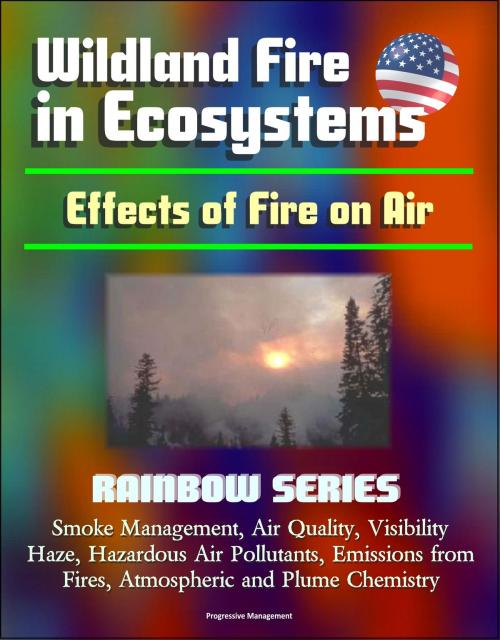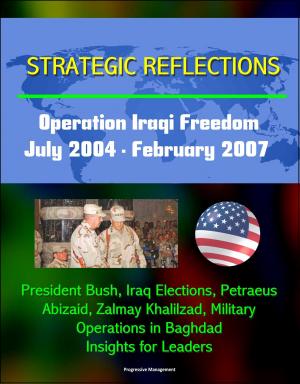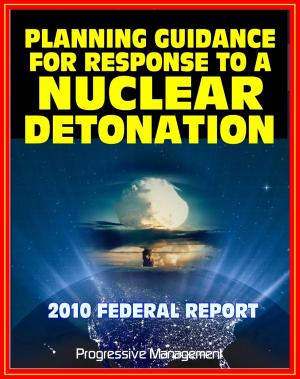Wildland Fire in Ecosystems: Effects of Fire on Air (Rainbow Series) - Smoke Management, Air Quality, Visibility, Haze, Hazardous Air Pollutants, Emissions from Fires, Atmospheric and Plume Chemistry
Nonfiction, Science & Nature, Technology, Fire Science, Science, Biological Sciences, Ecology| Author: | Progressive Management | ISBN: | 9781311737465 |
| Publisher: | Progressive Management | Publication: | December 1, 2014 |
| Imprint: | Smashwords Edition | Language: | English |
| Author: | Progressive Management |
| ISBN: | 9781311737465 |
| Publisher: | Progressive Management |
| Publication: | December 1, 2014 |
| Imprint: | Smashwords Edition |
| Language: | English |
This state-of-knowledge review about the effects of fire on air quality can assist land, fire, and air resource managers with fire and smoke planning, and their efforts to explain to others the science behind fire-related program policies and practices to improve air quality. Chapter topics include air quality regulations and fire; characterization of emissions from fire; the transport, dispersion, and modeling of fire emissions; atmospheric and plume chemistry; air quality impacts of fire; social consequences of air quality impacts; and recommendations for future research.
Keywords: smoke, air quality, fire effects, smoke management, prescribed fire, wildland fire, wildfire, biomass emissions, smoke dispersion
Chapter 1 * Introduction * Objective * Related Publications * Scope * Framework * Prior Work * Smoke Management Guide For Prescribed and Wildland Fire: 2001 Edition * Wildland Fire and Air Quality: National Strategic Plan * Introduction to Visibility * The Federal Advisory Committee Act White Papers * Environmental Regulation and Prescribed Fire Conference * Southern Forestry Smoke Management Guidebook * Changes in Fire Policy * Joint Fire Science Program * Cohesive Strategy * National Fire Plan * Chapter 2 * Air Quality Regulations and Fire * Roles and Responsibilities Under the Clean Air Act * National Ambient Air Quality Standards * Prevention of Significant Deterioration * Visibility * Regional Haze * Reasonable Progress * Hazardous Air Pollutants * EPA Interim Air Quality Policy on Wildland and Prescribed Fires * Natural Events Policy * Collaboration Among Stakeholders * Best Available Control Measures * Reducing Emissions * Redistributing Emissions * Ozone and Fire * Chapter 3 * Overview of Air Pollution from Fire * Magnitude of Fire Contributions * Smoke from Wildland Fires * Smoke from Prescribed Fires * Impacts on National Ambient Air Quality Standards * Significance of Visibility Degradation * Greenhouse Gas Emissions from Fires * Smoke Management Programs * Chapter 4 * Characterization of Emissions from Fires * Area Burned * Preburn Fuel Characteristics * Fire Behavior * Combustion Stages * Fuel Consumption * Emission Factors * Source Strength * Chapter 5 * Transport, Dispersion, and Modeling of Fire Emissions * Basic Elements of Trajectory and Dispersion * Heat Release * Plume Rise and Buoyancy * Advection and Diffusion * Scavenging * Chemical Transformations * Transport and Dispersion Models * Plume Models * Puff Models * Particle Models * Grid Models * Model Application * Chapter 6 * Atmospheric and Plume Chemistry * Ozone Formation in Plumes * Factors Affecting Plume Chemistry * Emission Factors for Reactive Species * Particle Formation in Plumes * Chapter 7 * Estimating the Air Quality Impacts of Fire * Emission Inventories * State Emission Inventories * Regional Emission Inventories * National Emission Inventories * Improving Emission Inventories * Air Quality Monitoring * Current Monitoring Techniques * Source Apportionment * Source Apportionment Methods * Receptor-Oriented Approaches * Factor Analysis and Multiple Linear Regression * Summary * Mechanistic Models * Chapter 8 * Consequences of Fire on Air Quality * Health Effects * National Review of Health Effects * Occupational Exposure to Wildland Fire Smoke * Research Issues Welfare Effects * Soiling of Materials * Public Nuisance and Visibility Loss * Economic and Social Consequences * Soiling-Related Economic Losses * Visibility-Related Costs * Highway Safety * Magnitude of the Problem * Measures to Improve Highway Safety Climate Change * Chapter 9 * Recommendations for Future Research and Development * Established Research Framework * Emerging Research Needs * Emissions Source Strength and Emissions Inventory * Ambient Air Quality Impacts * Effects on Receptors * Conclusion * References
This state-of-knowledge review about the effects of fire on air quality can assist land, fire, and air resource managers with fire and smoke planning, and their efforts to explain to others the science behind fire-related program policies and practices to improve air quality. Chapter topics include air quality regulations and fire; characterization of emissions from fire; the transport, dispersion, and modeling of fire emissions; atmospheric and plume chemistry; air quality impacts of fire; social consequences of air quality impacts; and recommendations for future research.
Keywords: smoke, air quality, fire effects, smoke management, prescribed fire, wildland fire, wildfire, biomass emissions, smoke dispersion
Chapter 1 * Introduction * Objective * Related Publications * Scope * Framework * Prior Work * Smoke Management Guide For Prescribed and Wildland Fire: 2001 Edition * Wildland Fire and Air Quality: National Strategic Plan * Introduction to Visibility * The Federal Advisory Committee Act White Papers * Environmental Regulation and Prescribed Fire Conference * Southern Forestry Smoke Management Guidebook * Changes in Fire Policy * Joint Fire Science Program * Cohesive Strategy * National Fire Plan * Chapter 2 * Air Quality Regulations and Fire * Roles and Responsibilities Under the Clean Air Act * National Ambient Air Quality Standards * Prevention of Significant Deterioration * Visibility * Regional Haze * Reasonable Progress * Hazardous Air Pollutants * EPA Interim Air Quality Policy on Wildland and Prescribed Fires * Natural Events Policy * Collaboration Among Stakeholders * Best Available Control Measures * Reducing Emissions * Redistributing Emissions * Ozone and Fire * Chapter 3 * Overview of Air Pollution from Fire * Magnitude of Fire Contributions * Smoke from Wildland Fires * Smoke from Prescribed Fires * Impacts on National Ambient Air Quality Standards * Significance of Visibility Degradation * Greenhouse Gas Emissions from Fires * Smoke Management Programs * Chapter 4 * Characterization of Emissions from Fires * Area Burned * Preburn Fuel Characteristics * Fire Behavior * Combustion Stages * Fuel Consumption * Emission Factors * Source Strength * Chapter 5 * Transport, Dispersion, and Modeling of Fire Emissions * Basic Elements of Trajectory and Dispersion * Heat Release * Plume Rise and Buoyancy * Advection and Diffusion * Scavenging * Chemical Transformations * Transport and Dispersion Models * Plume Models * Puff Models * Particle Models * Grid Models * Model Application * Chapter 6 * Atmospheric and Plume Chemistry * Ozone Formation in Plumes * Factors Affecting Plume Chemistry * Emission Factors for Reactive Species * Particle Formation in Plumes * Chapter 7 * Estimating the Air Quality Impacts of Fire * Emission Inventories * State Emission Inventories * Regional Emission Inventories * National Emission Inventories * Improving Emission Inventories * Air Quality Monitoring * Current Monitoring Techniques * Source Apportionment * Source Apportionment Methods * Receptor-Oriented Approaches * Factor Analysis and Multiple Linear Regression * Summary * Mechanistic Models * Chapter 8 * Consequences of Fire on Air Quality * Health Effects * National Review of Health Effects * Occupational Exposure to Wildland Fire Smoke * Research Issues Welfare Effects * Soiling of Materials * Public Nuisance and Visibility Loss * Economic and Social Consequences * Soiling-Related Economic Losses * Visibility-Related Costs * Highway Safety * Magnitude of the Problem * Measures to Improve Highway Safety Climate Change * Chapter 9 * Recommendations for Future Research and Development * Established Research Framework * Emerging Research Needs * Emissions Source Strength and Emissions Inventory * Ambient Air Quality Impacts * Effects on Receptors * Conclusion * References















